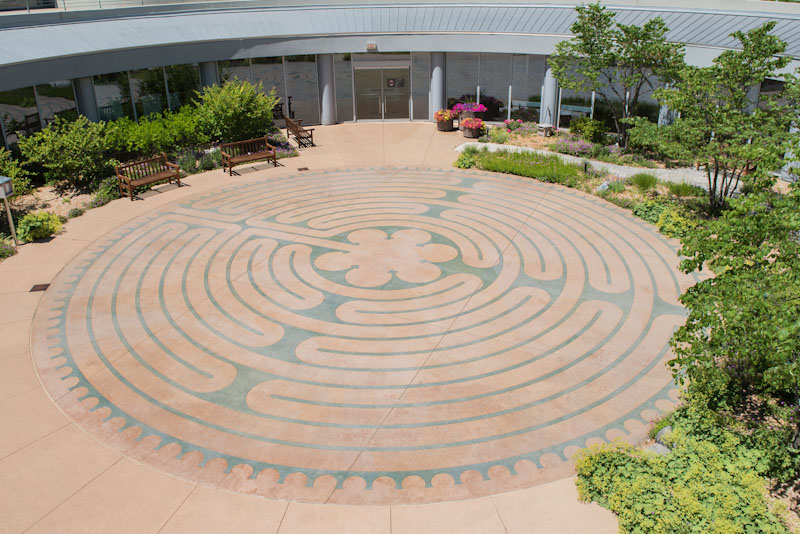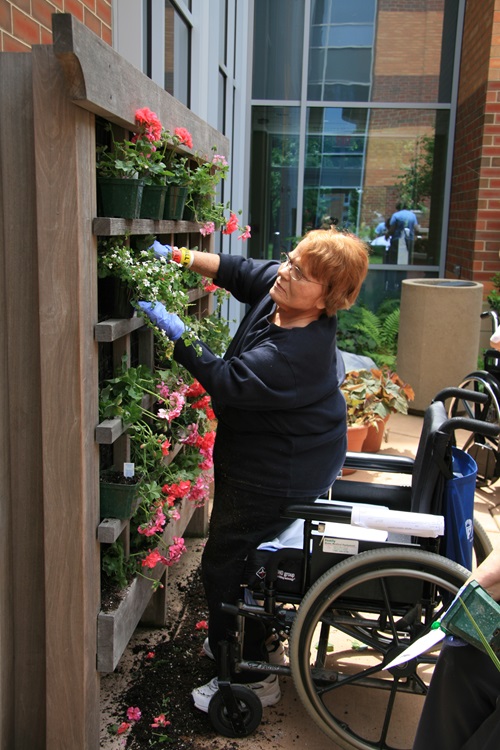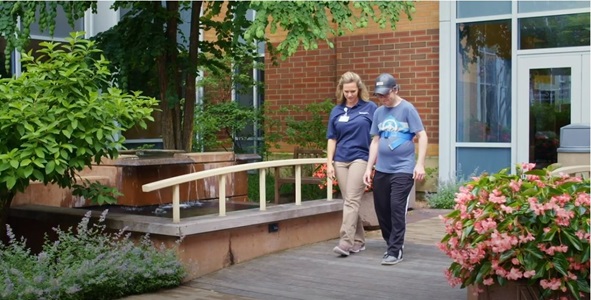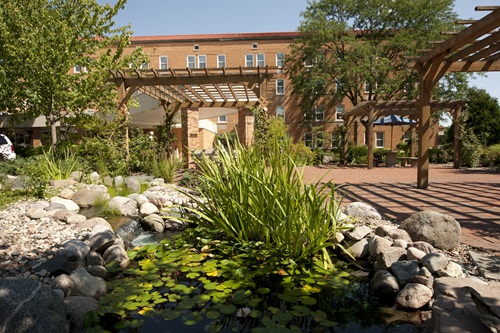The Healing Power of Gardens
Northwestern Medicine Marianjoy Rehabilitation Hospital Uses Nature as Therapy
Updated March 2023
Gardens are good for you. Research shows that spending time in nature and gardening helps boost mental, physical and social health, and it can reduce pain. It’s no wonder that patients and visitors are drawn to the calming effects of the 60-acre wooded grounds at Northwestern Medicine Marianjoy Rehabilitation Hospital, which has been repeatedly voted one of the top 20 most beautiful hospitals in the United States by Soliant Health.
The gardens give patients hope for the future.— Sarah Herron
The campus features several therapeutic gardens, as well as walking paths and a full-size labyrinth that are part of the holistic approach to care that considers mental, physical and spiritual needs.
Around the campus grounds, staff chose plants that are indigenous to the area, and landscaping was designed with careful consideration to the healing effects of nature. To provide a bright, open and inviting environment inside the hospital, patient rooms offer floor-to-ceiling windows that provide views of the surrounding prairie, woods and gardens.
The Gardens
Labyrinth Garden
Perhaps one of Marianjoy Rehabilitation Hospital’s most unique features is the Labyrinth Garden, patterned after the ancient design from Chartres Cathedral in France. Marianjoy’s full-size labyrinth is one of only a few located in a hospital in the United States. Patients use the Labyrinth Garden for physical therapy sessions to practice walking through the set of circular paths, as well as for quiet reflection and meditation. For some, the garden is a welcome distraction from the physical — and sometimes emotional — pain brought on by their conditions. Plants are placed in random order to represent the chaos of life, and as you move through the labyrinth, the flowers become more organized in groupings of three, four, seven or 12 (numbers used often in religious writing).

The Labyrinth Garden is open to the general public, and can be accessed without entering the hospital.
Rain Garden
The Aquatic Therapy Center and Rain Garden cover approximately 10,400 square feet, and naturally filter and slow rainwater runoff while removing pollutants and sediments, resulting in improved community water. Native perennials, trees, shrubs and ground cover are used in the garden, and benches are included along the paver paths.
Enabling Garden
The Enabling Garden, located in the center of Marianjoy’s inpatient hospital, offers a small bridge and a variety of surfaces to give patients an opportunity to practice navigating over varying textures and ground covers, such as concrete, inclines, steps and pebbles. Unique planters in various heights and sizes accommodate people using wheelchairs, walkers and other mobility aids so they may plant flowers and pull weeds as part of their therapy. A flower wall is positioned for patients who are regaining strength to practice reaching.

“We use this garden to work on many things with patients, such as mobility, arm strength, coordination and balance, cognition, sequencing, problem solving and pathfinding,” says Sarah Herron, an occupational therapist and manager of Rehabilitation Services at Marianjoy . “It's a really beautiful space. Patients and visitors tend to gravitate here to connect with each other and nature.”

Sensory Garden
For patients recovering from stroke and other neurological conditions, the Sensory Garden integrates a serene environment that stimulates and engages your senses of sight, smell and touch. Patients are immersed with the calming fragrance of lavender, the soft touch of lamb’s ear and other plants that have been chosen because of their sensory features.
Peace Path and Rose Garden
In addition to these unique gardens, patients, visitors and staff enjoy walking the Peace Path, a three-mile path loop around the campus, or taking in the beauty of the Rose Garden, featuring hybrid tea roses, New Dawn climbing roses, Knock Out roses and an abundance of perennials. The Rose Garden, which also includes a water fountain, koi pond and gazebos, was built in memory and honor of Provincial Sister Virginia Mary Barta, one of the Franciscan Sisters who founded Marianjoy in the late 1960s.

“The gardens give patients hope for the future,“ says Herron. “Digging in the dirt and being part of the gardens are so good for mind, body and spirit.”





